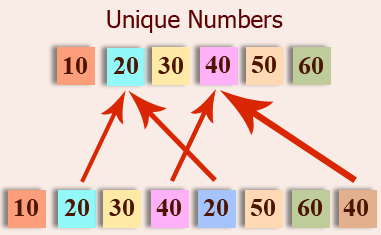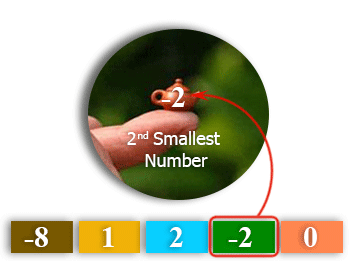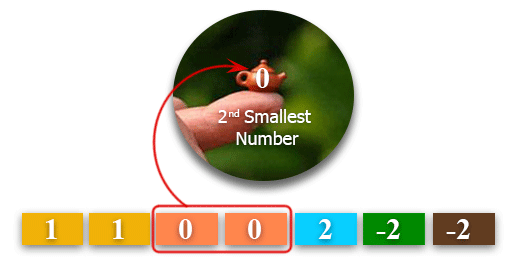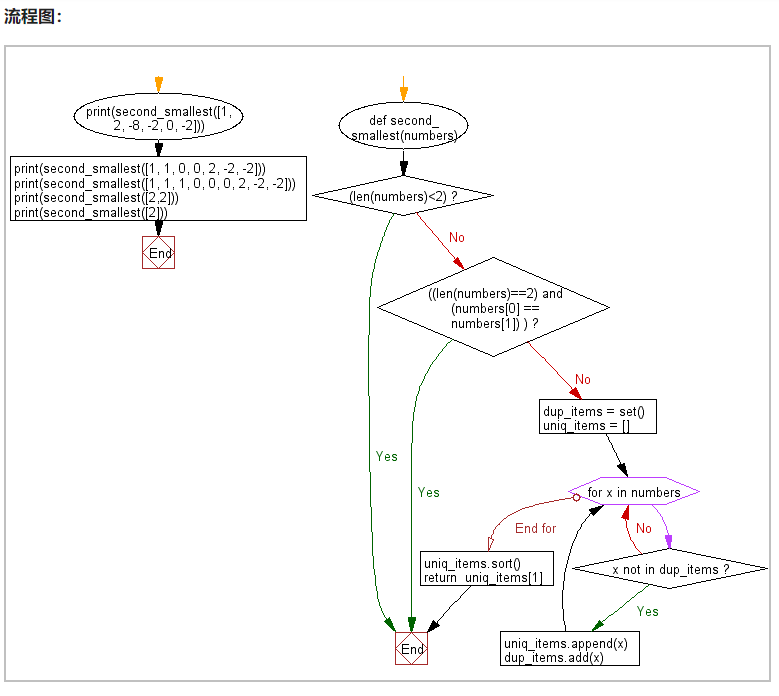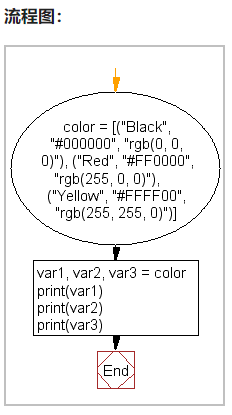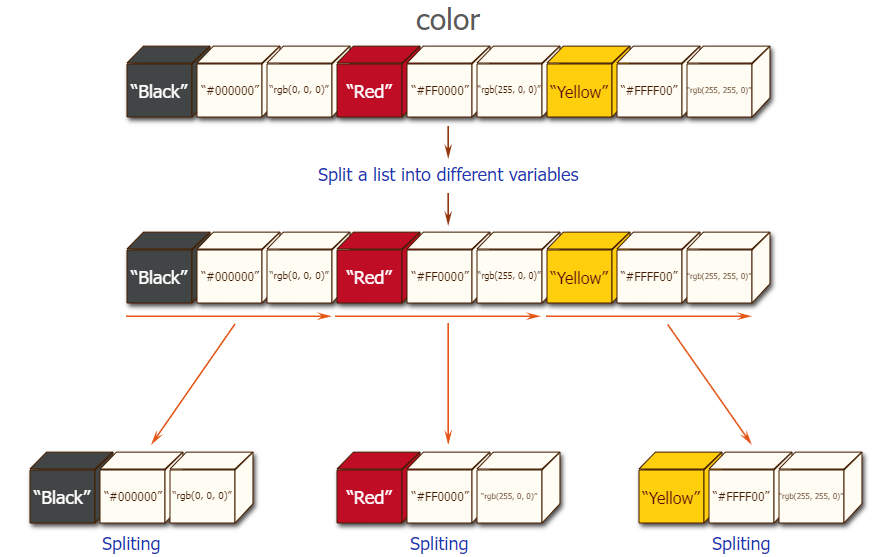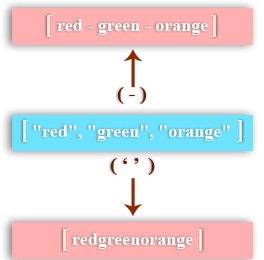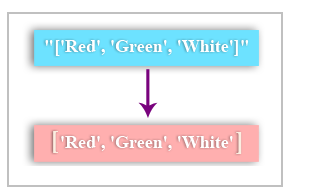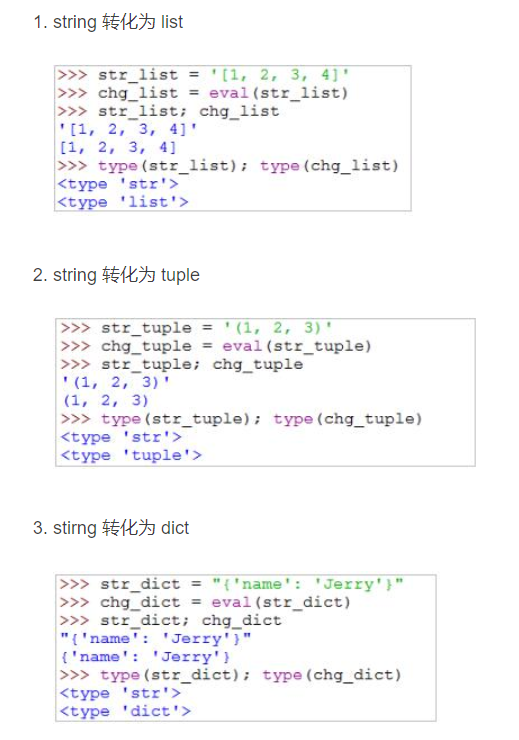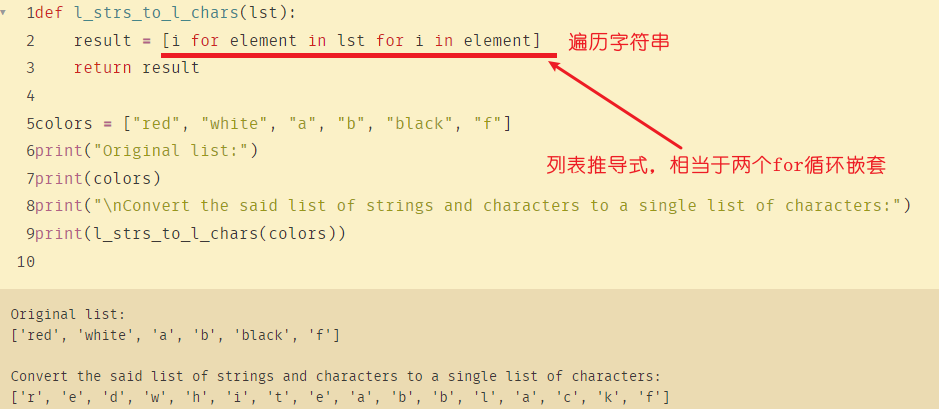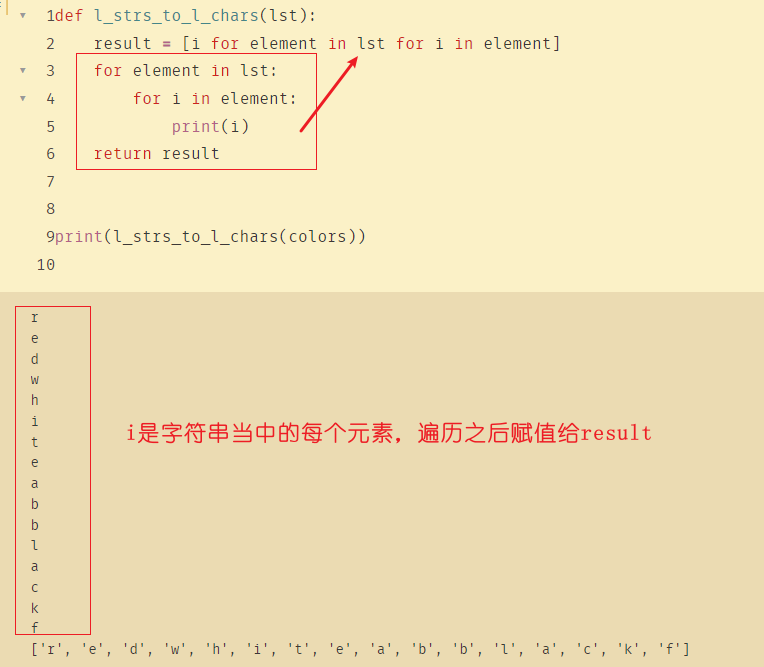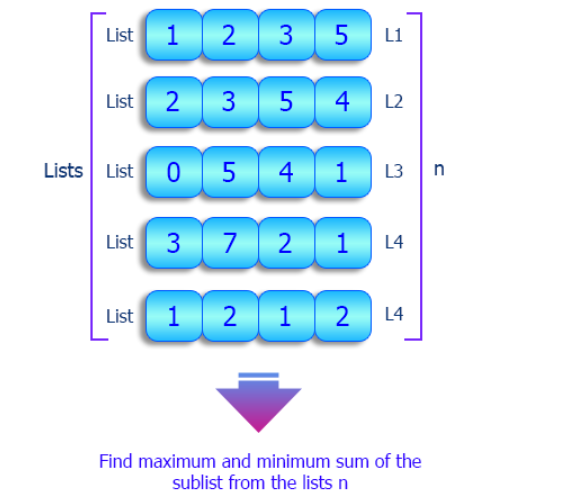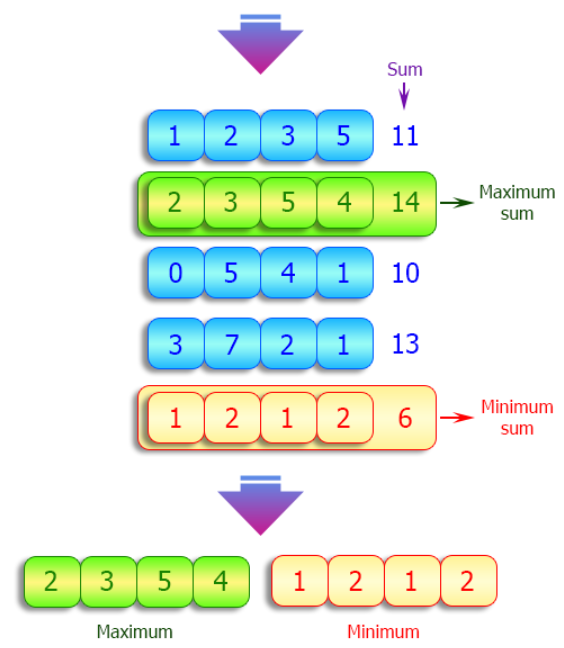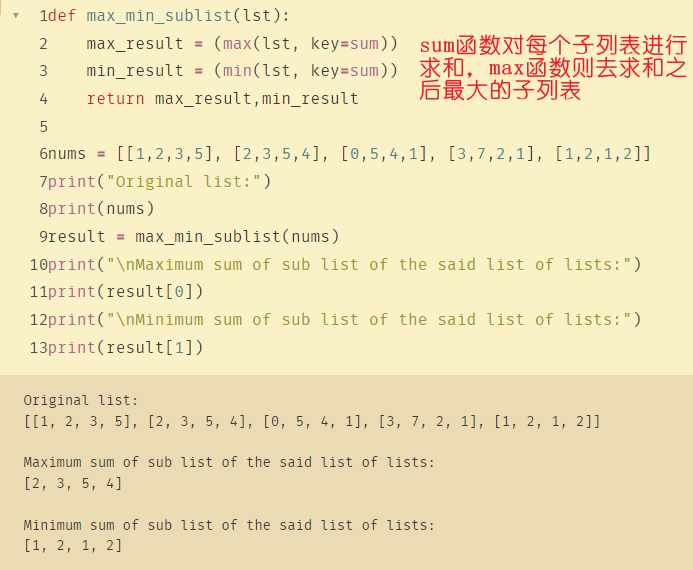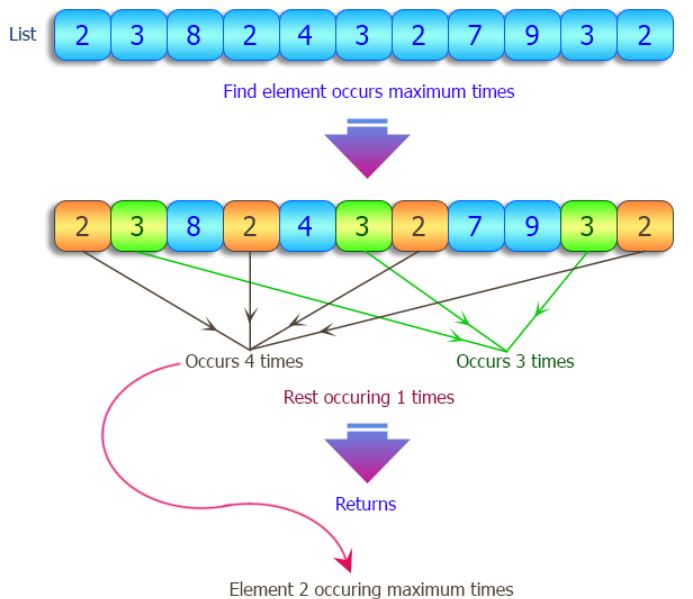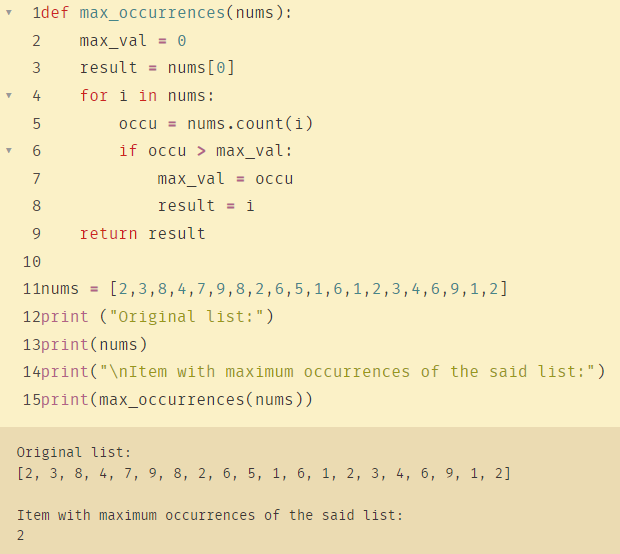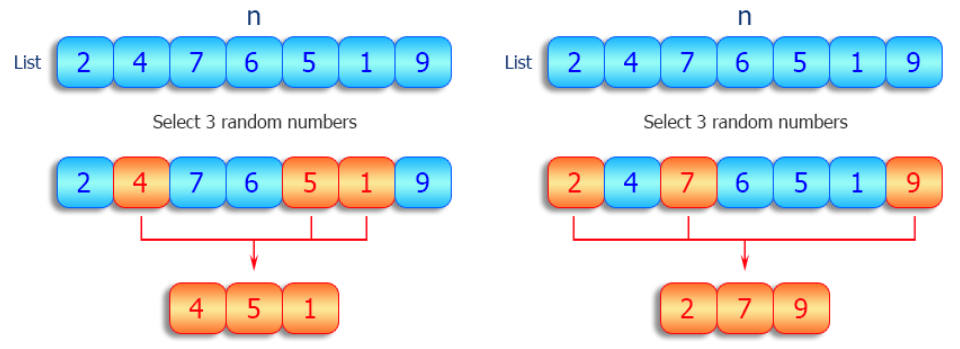16、从列表中获取唯一值
my_list = [10, 20, 30, 40, 20, 50, 60, 40] print("Original List : ",my_list) my_set = set(my_list) my_new_list = list(my_set) print("List of unique numbers : ",my_new_list) ''' Original List : [10, 20, 30, 40, 20, 50, 60, 40] List of unique numbers : [40, 10, 50, 20, 60, 30] '''
17、查找列表中第二小的数字
情况一:
情况二:
分析:需要使用列表和集合,并进行排序,最后找到第二小的数字,如果题目问的是第二大的也是如此
def second_smallest(numbers): if (len(numbers)<2): return if ((len(numbers)==2) and (numbers[0] == numbers[1]) ): return dup_items = set()# 空集合 uniq_items = []# 空列表 for x in numbers: if x not in dup_items: uniq_items.append(x) dup_items.add(x) uniq_items.sort() #将列表中的元素从小到大进行排序 return uniq_items[1] print(second_smallest([1, 2, -8, -2, 0, -2])) print(second_smallest([1, 1, 0, 0, 2, -2, -2])) print(second_smallest([1, 1, 1, 0, 0, 0, 2, -2, -2])) print(second_smallest([2,2])) print(second_smallest([2])) ''' -2 0 0 None None '''
18、将列表拆分成元组
color = [("Black", "#000000", "rgb(0, 0, 0)"), ("Red", "#FF0000", "rgb(255, 0, 0)"), ("Yellow", "#FFFF00", "rgb(255, 255, 0)")] var1, var2, var3 = color print(var1) print(var2) print(var3) print(type(var1)) ''' ('Black', '#000000', 'rgb(0, 0, 0)') ('Red', '#FF0000', 'rgb(255, 0, 0)') ('Yellow', '#FFFF00', 'rgb(255, 255, 0)') <class 'tuple'> '''
19、连接列表的元素
color = ['red', 'green', 'orange'] print('-'.join(color)) print(''.join(color)) ''' red-green-orange redgreenorange '''
但是color本身是没有变的
20、将字符串转换为列表
import ast color ="['Red', 'Green', 'White']" print(ast.literal_eval(color)) #['Red', 'Green', 'White']
【3】eval
eval 函数在Python中做数据类型的转换还是很有用的。
它的作用就是把数据还原成它本身或者是能够转化成的数据类型。
由于eval存在安全隐患,因此可以使用literal_eval()函数:
则会判断需要计算的内容计算后是不是合法的python类型,如果是则进行运算,否则就不进行运算。
Python中函数 eval 和 ast.literal_eval 的区别详解
21、从给定列表中删除特定单词
def remove_words(list1, remove_words): for word in list(list1): if word in remove_words: list1.remove(word) return list1 colors = ['red', 'green', 'blue', 'white', 'black', 'orange'] remove_colors = ['white', 'orange'] print("Original list:") print(colors) print("\nRemove words:") print(remove_colors) print("\nAfter removing the specified words from the said list:") print(remove_words(colors, remove_colors)) ''' Original list: ['red', 'green', 'blue', 'white', 'black', 'orange'] Remove words: ['white', 'orange'] After removing the specified words from the said list: ['red', 'green', 'blue', 'black'] '''
22、将字符串和字符列表转换为单个字符列表
def l_strs_to_l_chars(lst): result = [i for element in lst for i in element] return result colors = ["red", "white", "a", "b", "black", "f"] print("Original list:") print(colors) print("\nConvert the said list of strings and characters to a single list of characters:") print(l_strs_to_l_chars(colors)) ''' Original list: ['red', 'white', 'a', 'b', 'black', 'f'] Convert the said list of strings and characters to a single list of characters: ['r', 'e', 'd', 'w', 'h', 'i', 't', 'e', 'a', 'b', 'b', 'l', 'a', 'c', 'k', 'f'] '''
23、计算给定列表列表中子列表的最大和最小和
def max_min_sublist(lst): max_result = (max(lst, key=sum)) min_result = (min(lst, key=sum)) return max_result,min_result nums = [[1,2,3,5], [2,3,5,4], [0,5,4,1], [3,7,2,1], [1,2,1,2]] print("Original list:") print(nums) result = max_min_sublist(nums) print("\nMaximum sum of sub list of the said list of lists:") print(result[0]) print("\nMinimum sum of sub list of the said list of lists:") print(result[1])
24、查找给定列表中出现次数最多的项目
def max_occurrences(nums): max_val = 0 result = nums[0] for i in nums: occu = nums.count(i) if occu > max_val: max_val = occu result = i return result nums = [2,3,8,4,7,9,8,2,6,5,1,6,1,2,3,4,6,9,1,2] print ("Original list:") print(nums) print("\nItem with maximum occurrences of the said list:") print(max_occurrences(nums))
25、列表中提取给定数量的随机选择的元素
使用random.sample
import random def random_select_nums(n_list, n): return random.sample(n_list, n) n_list = [1,1,2,3,4,4,5,1] print("Original list:") print(n_list) selec_nums = 3 result = random_select_nums(n_list, selec_nums) print("\nSelected 3 random numbers of the above list:") print(result)
